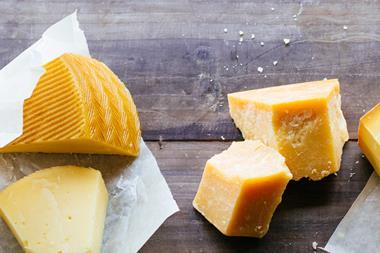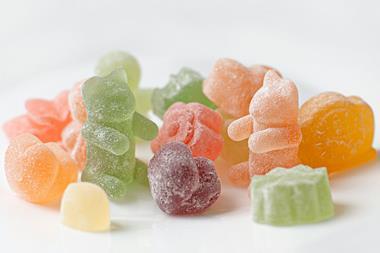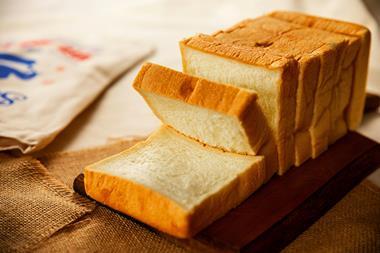
The Grocer’s Top Products Report is a must-have reference tool for anyone in UK FMCG. In partnership with Nielsen, this year’s report will crunch the numbers on 48 categories to reveal the winners and losers of the grocery price war. Packed with sales figures for more than 100 subcategories, a rundown of the most successful new launches and ad campaigns of the year and expert interviews with retailers and brand owners, this year’s report will include a wealth of multimedia digital content including films & members only content.
For editorial enquiries please contact the writer for the relevant category report (see below). The editorial project manager is rob.brown@thegrocer.co.uk. Editorial inclusion by invitation and via submission until 30th October.
Alcohol: Beer & Cider by Daniel Woolfson (Daniel.Woolfson@thegrocer.co.uk) Average prices have surged in beer & cider over the past year, yet Brits are still sloshing back growing volumes of the stuff. What factors (premiumisation, price hikes, format changes, cuts in deals, etc) have driven prices up? How have retailers changed their beer & cider ranges? Which products are prospering and who’s losing out?
Alcohol: Spirits & RTDs by Daniel Woolfson (Daniel.Woolfson@thegrocer.co.uk) This might be the year that vodka became Britain’s bestselling spirit after sales overtook those of blended Scotch, but the real action is still in gin. Three of the top five fastest growing spirits brands are gins, having racked up more than £40m of growth between them. How is the growth in gin impacting sales and space allocation of other spirits products? Who have been the biggest winners and losers of the past year and what does the coming year have in store?
Alcohol: Wine by Daniel Woolfson (Daniel.Woolfson@thegrocer.co.uk) As sales of sparkling wine continue to fly, still wine and Champagne have the dubious distinctions of being the only booze sectors in volume decline. Why? From looking at the still wine bestsellers list, it’s clear that the supermarkets’ wine aisles are in a state of flux: three of the top five sellers are in double digit volume decline, the other two are in double digit growth. So who are the biggest winners and losers of the year and what’s driving their performances? How is own label doing? What does all this tell us about drinking trends?
Baby & infant products by James Halliwell (jameshalliwell@gmail.com) Baby & infant snack sales are bouncing! But as this sector surges, sales of other baby foods, milk powders and juice are in steep decline. Why? Who have been the biggest winners and losers in the market? How are retailers changing their branded and own label ranges? And why have these sectors seen some of the steepest average price rises of the year?
Bagged snacks by Daniel Selwood (Daniel.Selwood@wrbm.com) Bagged snacks are in value and volume growth, suggesting that savoury snacks are stealing greater share of the so-called ‘Big Night In’ occasion from chocolate and sweets. Is this the case? What’s driving this? Who have been the winners and losers of the past year in this sector? How important has new product development been?
Batteries by Emily Bright (Emily.Bright@thegrocer.co.uk) Battery volumes have inched up 0.4%, while value sales have risen at nearly three times that rate, mirroring the inflationary picture we’re seeing elsewhere in grocery. But among the topsellers, we’re seeing big swings in share as the biggest brands battle for share of space in the supermarkets. Who’s winning? Who’s losing? And what does the coming year have in store in the batteries market?
Biscuits by Matt Strudwick (Matt.Strudwick@wrbm.com) A flat year for sweet biscuits and one of steady growth for cereal bars; considering all the talk of healthy eating and sugar reduction, that’s not a bad result. How are Britain’s biggest biscuit brands managing to grow? Are they stealing share of the ‘Big Night In’ occasion from confectionery? Are cereal bars winning shelf space once occupied by chocolate bars in store as shoppers look for healthier options? Who are the winners and losers in this sector? Why are savoury biscuits in decline? Who is winning and losing in this sector?
Bread by Daniel Selwood (Daniel.Selwood@wrbm.com) A landmark year for bread, and so for Britain. The average price of one of the country’s most widely consumed food stuffs began to rise again after years of deflation driven by loss leading in the supermarkets and the ongoing price war. Are rising prices purely down to the inflationary pressures we’re seeing elsewhere or are there other factors, such as the development of value added loaves, at play here? What impact is higher prices having on volume sales? Are consumers trading down to own label? Which brands are winning and losing? Why?
Cakes by Matt Strudwick (Matt.Strudwick@wrbm.com) Volumes are down as prices rise. Yet four of the five top selling brands are in solid value and volume growth. How are they doing this? How big a role has NPD and new formats had on this performance and what factors have led to the decline of their rivals? What has pushed average price per unit up 3% - raw material costs, surely, but what about larger multipacks, bigger cakes and so on? Is the backlash against sugar taking its toll on this sector?
Canned food by Carina Perkins (Carina.Perkins@wrbm.com) The rate of canned food’s decline has slowed in the past year, but for the most part it seems to be own label lines that are benefitting from the slight improvement in the sector’s performance. Why is this? Who have been the biggest winners and losers in canned food over the past year? How are brands looking to win lost share back from own label?
Cereals by Daniel Selwood (Daniel.Selwood@wrbm.com) The decline of the breakfast cereal appears to be bottoming out, with volumes dipping by just 0.8% in the past year. However, unlike most other sectors, prices are still falling. Why is this? Is the slowing of cereal’s decline evidence that Brits are falling back in love with cereals? Who have been the winners and losers in the past year among brands and own label?
Chocolate confectionery by Daniel Selwood (Daniel.Selwood@wrbm.com) Is Britain losing its sweet tooth? That the supers have sold fewer packs of chocolate in the past year might suggest so, but there is still success to be found in the bestsellers list for this sector. What is driving double digit value and volume growth for some players as their rivals suffer big declines? How much of a role is the health agenda having on sales of confectionery and what other factors are at play? What does the coming year have in store?
Sugar confectionery by Daniel Selwood (Daniel.Selwood@wrbm.com) Despite the overall decline, there are a number of players in strong growth. To what extent are trends such as growing demand for no or lower sugar products, retro sweets and seasonal specials driving this? What else is behind this? Many mint brands are also in strong growth while gum is in decline? Are gum chewers swapping over to the wealth of new mint products and formats that have hit the market?
Cosmetics by Natalie Brown (Natalie_Brown@live.co.uk) Supermarket sales of cosmetics are rapidly approaching the £1bn market as the supers shift growing amounts of pricier make up. Which brands are driving this growth? Why are volumes down? Who is being left behind? And what are the big trends in the market?
Dairy: Butters & Spreads by Nick Hughes (nickjhughes@hotmail.co.uk) Massive price rises have made butters & spreads one of the fastest growing sectors of the year. In value terms at least (Brits spent nearly £40m more on BSM in the past year); by volume, sales have continued to decline. What factors are driving this? Who have been the biggest winners and losers of the past year? Is butter still in vogue? Are dairy spreads still out of fashion? What do players have in store for the coming year?
Dairy: Cheese by Nick Hughes (nickjhughes@hotmail.co.uk) The cheese sector continues to struggle yet there are still success stories to be found among the bestsellers list, with some of the markets biggest players in significant growth. How are they growing? Why is the market still in decline? Who are the biggest winners and losers of the year? And what is pushing prices up
Dairy: Drinks by Kevin White (kevin.white@thegrocer.co.uk) Milk is defying the pattern we’re seeing elsewhere in grocery right now, with average prices having dipped in the past year. Meanwhile, flavoured milk and yoghurt drinks have seen prices rise. What factors are at play here? Who is winning and losing in these markets? Is own label stealing share?
Dairy: Yoghurts by Kevin White (kevin.white@thegrocer.co.uk) Supermarkets sold 200 million fewer kilos of the stuff in the past year - what’s driving this and how are some brands still managing to grow in this harsh environment? What factors are driving the losses of their rivals? What’s driving average prices up in this sector? How are retailers adjusting their ranges to reflect trends such as health, free from and so on?
Free From by Emma Weinbren (emma.weinbren@thegrocer.co.uk) The free from market is still powering on. In fact, the past year’s percentage value growth is more or less the same as the rate we reported in last year’s report. Sales are on course to pass the £1bn market shortly. So what’s driving this? Which retailers, brands and own label lines are cashing in? How are they doing this? Is anyone being left behind? Why?
Fresh fruit & veg by Carina Perkins (Carina.Perkins@thegrocer.co.uk) Most of the major fruit & veg types are in solid growth. What’s driving this? And how is Britain’s taste in fresh fruit changing? What are the strongest and weakest performers? Why? To what extent does the five a day message affecting the market? Are shoppers buying more packaged fruit? And what will happen to prices over the coming year?
Fresh meat, fish & poultry by Carina Perkins (Carina.Perkins@thegrocer.co.uk) Brits have significantly cut back on their consumption of meat fish and poultry in the past year, with red meat suffering by the far the biggest loss in the sector. Why is this? Which proteins have suffered the greatest losses and are any in growth? What are the reasons for this? How are prices being impacted by wider macro economic factors? How will recent scandals involving the British meat industry impact the market going forward?
Frozen food by Rachel Graham (Rachel.Graham@thegrocer.co.uk) Frozen food is being left out in the cold yet scrape beneath the surface and there are plenty of success stories of brands and own label driving impressive growth. How are they doing this? How have prices changed over the past year and why? How are different retailers approaching their branded and own label ranges? And why is Britain buying more frozen pizza?
Hot beverages by Natalie Brown (Natalie_Brown@live.co.uk) Britain’s love affair with coffee endures, with coffee again the strongest performing sector in hot beverages. Still, tea is showing signs of recovery, with the sector having returned to value growth in the past year. How much of this is down to inflation and the impact of the Brexit vote? Who have been the biggest winners and losers in coffee, tea, hot chocolate and malted drinks? Why?
Household by Emily Bright (Emily.Bright@thegrocer.co.uk) The supermarkets are selling fewer household products in every major sector, from toilet to air care. Does this mean Brits are becoming less house proud or are they instead choosing to by their household cleaners elsewhere, such as online or at the discounters? Despite the decline, some brands and own label are in growth? Why? Why are others in decline? And what’s happening to the average price of household cleaner post Brexit vote?
Ice cream by Rachel Graham (Rachel.Graham@thegrocer.co.uk) Ice cream is performing well. To what extent is this being driven by retailers increasing space in their freezers for ice cream at the expense of other, lower value frozen food stuffs? What other factors are driving growth in the category? Who have been the winners and losers of the past year and what factors have driven their performances? How are prices being affected by the macro economic factors being felt elsewhere in grocery?
Jams & spreads by Megan Tatum (Megan.Tatum@thegrocer.co.uk) Jams & marmalades have come unstuck, while sales of peanut butter and choclate spread continue to go from strength to strength. Why? How have retailers’ ranges been adjusted in the past year to reflect shifts in this sector? To what extent is the sector being driven by changing perceptions of ‘healthy eating?’ And how are manufacturers’ input costs being affected by economic factors such as the pound’s weakness? Are prices going up?
Laundry by Emily Bright (Emily.Bright@thegrocer.co.uk) Are we witnessing a fundamental structural shift in the way Britain buys items such as laundry detergent? The numbers suggest we might be, with all but two of the top 10 brands in this sector in decline. Where are shoppers buying such products from now, if not the supermarkets? Why? Fabric conditioners’ aren’t in much better shape, with the sector’s slower rate of decline mostly the result of higher prices. So how are the few that are growing managing it? What do those in decline need to do?
Oil by Carina Perkins (Carina.Perkins@thegrocer.co.uk) There’s been strong growth in own label oils this past year. Is this proof that shoppers are trading down as brands’ average prices rise in this sector? What’s driving prices up? What has led to strong growth for some and big losses for others? How have retailers’ ranges changed in the past year and what’s in store form the coming year?
Over the Counter by James Halliwell (jameshalliwell@gmail.com) What is the secret to success in the over the counter remedies market? It’s worth asking, because in spite of a mostly negative picture in this market’s sectors (ranging from adult analgesics to indigestion and hayfever remedies), there are a number of brands in significant growth. How come? And why are their rivals floundering? How are prices changing?
Paper products by Emma Weinbren (emma.weinbren@thegrocer.co.uk) Supermarket sales of toiler tissue have inched up slightly in the past year, while value sales fell on the back of lower prices across own label and brands. Meanwhile, sales of nappies have continued to decline. Facial tissues and kitchen towels have had mixed results as prices have risen in the former and dipped in the latter. What’s driving all this? Who have been the winners and the losers of the past year?
Personal care: Haircare by Daniel Selwood (Daniel.Selwood@thegrocer.co.uk) The supermarkets continue to struggle with haircare: volumes are down in all three of the major sectors in this market. Why? Where are shoppers choosing to buy their haircare products if not at the supermarkets? How are some brands still managing to grow in this challenging environment? And what are others doing to turn things around?
Personal care: Male grooming by Daniel Selwood (Daniel.Selwood@thegrocer.co.uk) Are British men letting themselves go? Or are they just finding other places (such as online shaving subscriptions or the discounters) to buy their grooming products? Whatever the answer, this market is not looking too spruce right now. This report will analyse the factors that have led to this, weighing up how some players have managed to grow and why others are in decline. What’s in store for the coming year?
Personal care: Grooming by Daniel Selwood (Daniel.Selwood@thegrocer.co.uk) A mixed performance across the grooming category, with volumes falling universally but prices growing in some and down in others. What’s going on? To what extent is premiumisation driving up prices in some sectors? What other factors are driving up price? And how are some brands driving strong growth while others suffer steep declines?
Personal care: Oral care by Daniel Selwood (Daniel.Selwood@thegrocer.co.uk) Punters are paying significantly more for oral care products in the supermarkets. Why? Are brands convincing shoppers that NPD aimed at those who want whiter smiles or who have special demands is worth paying more for? Who are the winners and losers in oral care over the past year? And how are retailers ranges evolving?
Pet care by Natalie Brown (Natalie_Brown@live.co.uk) Sales of premium pet food that wouldn’t look out of place on a pet owner’s dinner table are booming, as the overall market continues to struggle. Which brands are driving this? How are retailers pushing posher pet food, through promotions, merchandising and so on? Who is being left behind? How are pet food prices and input costs being impacted by macro economic factors?
Ready meals by James Halliwell (jameshalliwell@gmail.com) Ready meals are in rude health, with all three sub sectors in value and volume growth. Which brands are retailers are driving this and how? What macro trends are driving growth in this sector and is anyone being left behind? How are prices being impacted by factors such as the depreciation of the pound, premiumisation and so on?
Rice, noodles & pasta by James Halliwell (jameshalliwell@gmail.com) Rice and pasta are in solid growth, while value sales of noodles are up on volumes down, as a result of higher prices. Who have been the biggest winners and losers of the past year in this sector? What is pushing the average price per unit of rice and pasta down? What impact is deep deals on pouched rice having on the sector? What impact is NPD and new formats having?
Sauces: Cooking by Carina Perkins (Carina.Perkins@thegrocer.co.uk) Cooking sauces have suffered another year of tumbling sales as the scratch cooking trend and health concerns continue to influence shopper behaviour. So what are the main factors affecting this sector? How are some brands still managing to grow despite the stiff headwinds? What are those in decline doing to turn things around? What’s driving the impressive growth of own label?
Sauces: Table by Natalie Brown (Natalie_Brown@live.co.uk) There are big changes taking place at edges of Britain’s dinner plates, as shoppers plump for increasingly exotic sauces and condiments. As we revealed earlier this year, sales of mayonnaise have overtaken those of ketchup for the first time. Which brands and own label lines are winning in this climate? Who’s losing out? What factors (NPD, price, promotions, etc) are driving their performances?
Savoury pastries & meat snacks by Natalie Brown (natalie_brown@live.co.uk) Meat snacks are flying, while savoury pastries’ growth is being driven by higher prices. What are the macro trends at play here and who are the stand out performers in the category? Who’s winning? Who’s losing? Why? And what’s driving prices up?
Sexcare by by James Halliwell (jameshalliwell@gmail.com) Supermarket sales of sexcare products are buzzing! Lubricants and sexual devices are enjoying double digit growth, with value gains by far outstripping volume. Why? Which brands are pushing this and why are prices rising? Meanwhile, condom volumes are falling following big rises in price per unit. What’s going on? Are people going elsewhere for their condoms?
Soft drinks: Bottled water, squash & cordials by Daniel Woolfson (Daniel.Woolfson@thegrocer.co.uk) Bottled water continues to fly as squashes & cordials struggle. Why? Which brands are cashing in and who is being left on the shelf? How are factors such as inflation, taxation (particularly the sugar levy), the health trend and so on playing out in this sector?
Soft drinks: Carbonates, sports & energy drinks by Daniel Woolfson (Daniel.Woolfson@thegrocer.co.uk) Carbonated soft drinks have regained some of their fizz in the past year, with the rate of the sector’s volume decline slowing significantly and value sales in solid growth. Sports & energy drinks are in value and volume growth. What, and who, is driving this? What impact has the impending sugar levy had on NPD, marketing, etc? Who is losing out?
Soft drinks: Juice & smoothies by Daniel Woolfson (Daniel.Woolfson@thegrocer.co.uk) Volumes of juices, smoothies and juice drinks continue to fall as value sales grow on the back of higher prices. What’s driving this? What impact are the sugar debate, inflation and other factors having? Who have been the winners of the past year and why? Who’s being left on the shelf and why?
Soup by Megan Tatum (Megan.Tatum@thegrocer.co.uk) Brits are buying less soup. Why? Which sectors have suffered the greatest losses and why? How are some brands achieving impressive growth in spite of overall category performance? How is the dynamic between brands and own label playing out? And is chilled soup still as reliant on promotions to shift volumes?
Sports nutrition by Matt Strudwick (Matt.Strudwick@wrbm.com) Sports nutrition sales are going from strength to strength. Why? Who have been the biggest winners and losers in the past year? What factors are driving their performances and what’s in store for the coming year?
Tobacco by Ronan Hegarty (ronan.hegarty@thegrocer.co.uk) Who have been the biggest winners and losers in the year in which tobacco brands for all intents and purposes ceased to exist? With the introduction of plain packs, how are some brands still managing to convince smokers that they are better than their rivals? And how much potential does the new breed of smokeless tobacco products have?
Tobacco: E cigs by Ronan Hegarty (ronan.hegarty@thegrocer.co.uk) Value sales are falling as volumes continue to soar. Why? Is the fall in price the result of growing competition or something else? How are formats changing? Who have been the biggest winners and losers of the past year? Why?
Downloads
Top Products Synopsis 2017
PDF, Size 0.33 mb











No comments yet